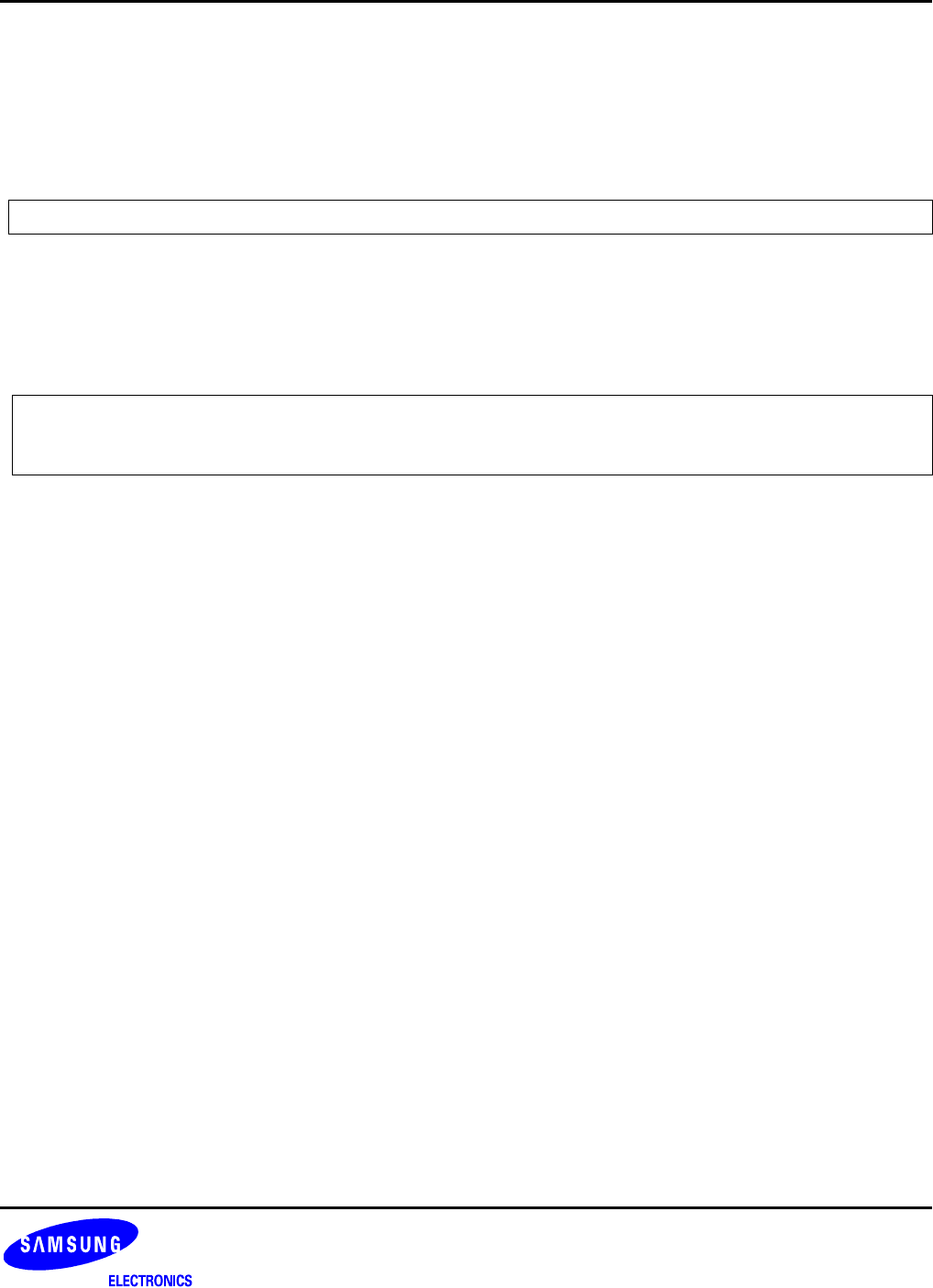
S3C2440A RISC MICROPROCESSOR UART
11-7
Baud-rate Generation
Each UART's baud-rate generator provides the serial clock for the transmitter and the receiver. The source clock
for the baud-rate generator can be selected with the S3C2440A's internal system clock or UEXTCLK. In other
words, dividend is selectable by setting Clock Selection of UCONn. The baud-rate clock is generated by dividing
the source clock (PCLK, FCLK/n or UEXTCLK) by 16 and a 16-bit divisor specified in the UART baud-rate divisor
register (UBRDIVn). The UBRDIVn can be determined by the following expression:
UBRDIVn = (int)( UART clock / ( buad rate x 16) ) –1
( UART clock : PCLK, FCLK/n or UEXTCLK )
Where, UBRDIVn should be from 1 to (2
16
-1), but can be set 0(bypass mode) only using the UEXTCLK which
should be smaller than PCLK.
For example, if the baud-rate is 115200 bps and UART clock is 40 MHz, UBRDIVn is:
UBRDIVn = (int)(40000000 / (115200 x 16) ) -1
= (int)(21.7) -1 [round to the nearest whole number]
= 22 -1 = 21
Baud-Rate Error Tolerance
UART Frame error should be less than 1.87%(3/160).
tUPCLK = (UBRDIVn + 1) x 16 x 1Frame / PCLK tUPCLK : Real UART Clock
tUEXACT = 1Frame / baud-rate tUEXACT : Ideal UART Clock
UART error = (tUPCLK – tUEXACT) / tUEXACT x 100%
NOTE
1. 1Frame = start bit + data bit + parity bit + stop bit.
2. In specific condition, we can support the UART baud rate up to 921.6K bps. For example, when PCLK is
60MHz, you can use 921.6K bps under UART error of 1.69%.
Loopback Mode
The S3C2440A UART provides a test mode referred to as the Loopback mode, to aid in isolating faults in the
communication link. This mode structurally enables the connection of RXD and TXD in the UART. In this mode,
therefore, transmitted data is received to the receiver, via RXD. This feature allows the processor to verify the
internal transmit and to receive the data path of each SIO channel. This mode can be selected by setting the
loopback bit in the UART control register (UCONn).


















